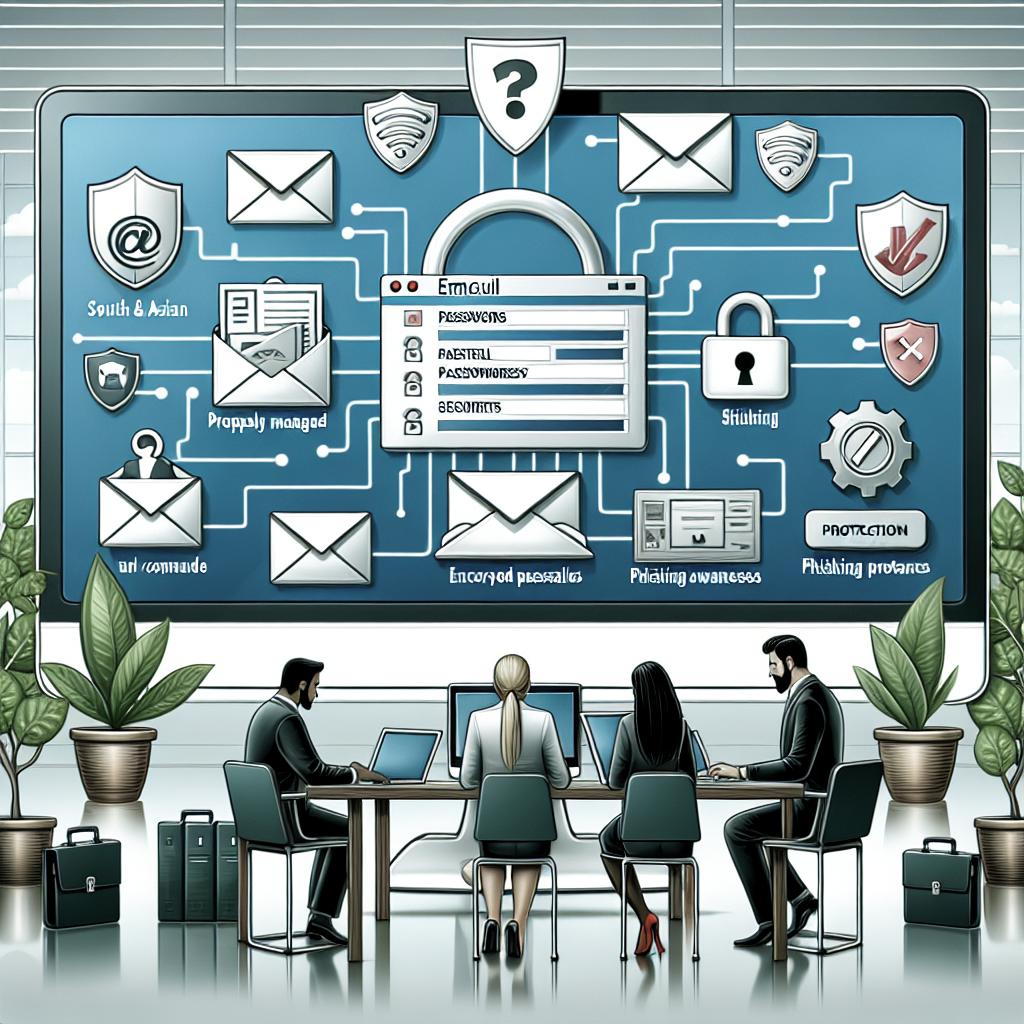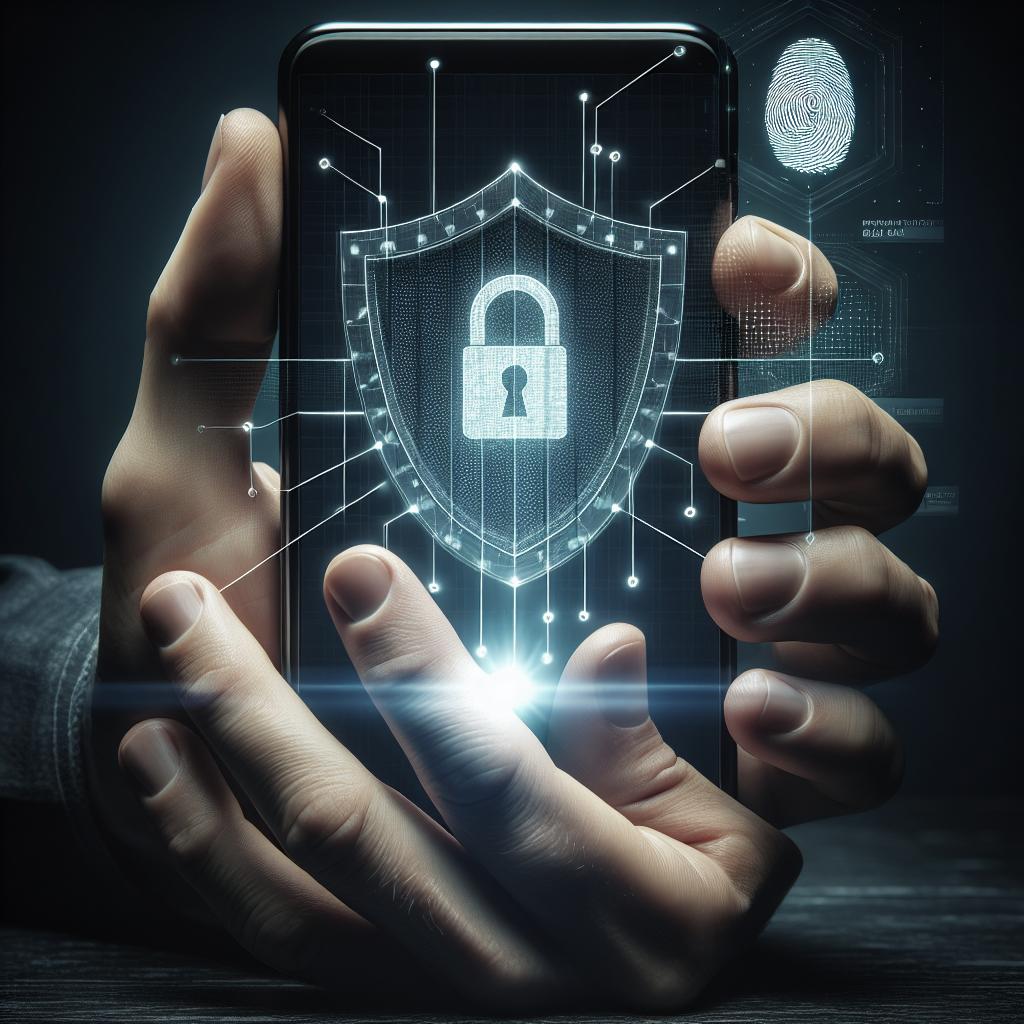“`html
Best Practices for Email Security to Safeguard Your Organization
In today’s digital-first world, email remains a primary communication tool for businesses worldwide. Unfortunately, this also makes it a prime target for cybercriminals looking to exploit vulnerabilities and gain unauthorized access to corporate networks. To protect your organization from potential breaches, it’s imperative to implement robust email security measures. This article outlines 15 vital email security best practices that can significantly reduce the risks associated with email threats. From educating employees and enforcing strong password policies to embracing advanced security tools, these strategies provide a multi-layered defense against cyber attacks.
Attackers exploit email every day to break into corporate networks, but the risk can be reduced by adhering to these 15 email security best practices.
1. Train employees on email security best practices
Employees are the first line of defense in email security. Regular training sessions should be implemented to educate staff on identifying potential email threats, such as phishing attempts and suspicious attachments. Awareness programs should include simulated phishing exercises to test their ability to detect fraudulent emails effectively.
Training must also emphasize the importance of email security in maintaining organizational integrity. Employees should understand that their vigilance in recognizing and reporting threats is crucial to safeguarding sensitive data and preventing costly security incidents.
What is cyber hygiene and why is it important?
Cyber hygiene refers to the practices and steps that users of computers and other devices take to maintain system health and improve online security. It’s important because, just like personal hygiene, regular practice of cyber hygiene can keep systems robust against malicious attacks. Basic practices include updating software, using antivirus solutions, and careful handling of data and credentials.
2. Create strong passwords
Creating strong passwords is a fundamental aspect of email security. Passwords should be complex, mixing uppercase and lowercase letters with numbers and symbols, to make them difficult to guess. Encourage employees to avoid using easily obtainable information such as birthdays or common phrases.
In addition, password managers can be utilized to generate and store strong, unique passwords for different accounts. This ensures that passwords are not only strong but also memorable to users, reducing the occurrence of repetitive passwords across multiple platforms.
3. Don’t reuse passwords across accounts
Reusing passwords across different accounts poses a significant security risk. If one account is compromised, others become vulnerable to attacks. In a corporate setting, it is essential to mandate unique passwords for each account or application utilized by employees.
Implementing policies that prohibit password reuse is an effective step towards mitigating the risk of a single breach. Training sessions should reinforce this practice to ensure it is an embedded part of your organization’s security culture.
4. Consider changing passwords regularly — or not
Traditionally, changing passwords regularly has been recommended to enhance security. However, recent guidance from cybersecurity experts suggests that constant password changes might lead to weaker passwords as users resort to predictable patterns. Thus, the need to change passwords should be balanced with the use of strong initial passwords and additional security measures.
To complement strong passwords, organizations should implement policies that dictate password updates only when there’s a perceived threat or actual breach. This can alleviate unnecessary strain on employees while maintaining a secure email environment.
5. Use multifactor authentication
Multifactor authentication (MFA) adds an extra layer of security beyond passwords by requiring multiple forms of verification. This could be a combination of something the user knows, such as a password, and something they have, like a mobile device to receive a verification code.
Implementing MFA makes it significantly harder for unauthorized individuals to access accounts, even if they possess valid passwords. This method is increasingly recommended as a security standard and should be a critical component of any corporate email security strategy.
6. Take phishing seriously
Phishing remains one of the most common and effective email-based attacks. Cybercriminals craft convincing emails to trick individuals into divulging sensitive information or clicking on malicious links. Organizations must take phishing threats seriously and educate employees on how to recognize and handle such emails.
Anti-phishing tools can be deployed at the email server level to filter and block fraudulent emails before they reach employees’ inboxes. Combining technical solutions with user training creates a comprehensive defense against phishing attempts.
7. Be wary of email attachments
Email attachments can often harbor malicious software. Employees should be instructed to treat any unexpected attachment with suspicion, especially if the email appears slightly unusual or comes from an unknown sender.
It’s crucial to implement security solutions that scan email attachments for malware before they reach the user. This serves as a proactive measure to prevent potential infections resulting from inadvertently opened attachments.
8. Don’t click email links
Similar to attachments, links in emails can lead to compromised websites designed to install malware or steal credentials. Best practices dictate that employees should avoid clicking links from unverified senders and instead manually type the web addresses they intend to visit.
Training should also highlight how to hover over links to reveal their true destination, helping users assess whether clicking is safe. Implementing web and email filtering tools can further protect against harmful links by proactively blocking access.
9. Don’t use business email for personal use and vice versa
Keeping business and personal email accounts separate is crucial for maintaining security. Combining the two can expose business email accounts to consumer-level threats that don’t meet the same security standards as corporate environments.
Organizations should enforce policies that explicitly prohibit the use of corporate emails for personal activities, thus reducing exposure to potential attacks that originate from less secure personal email environments.
10. Only use corporate email on approved devices
Corporate emails should only be accessed from devices that meet the organization’s security requirements. This may include company-issued hardware or personal devices equipped with modern security software and configurations approved by the IT department.
By controlling the devices that can access corporate email systems, organizations can reduce exposure to vulnerabilities that might exist on unmanaged or unsecured devices used by employees.
11. Encrypt email, communications and attachments
Encryption is a powerful tool for protecting sensitive information shared via email. Encrypted emails and attachments turn plaintext data into code that can only be deciphered with a secure key, preventing unauthorized access even if the message is intercepted.
Using email encryption protocols such as SSL/TLS protects emails in transit, while encrypting stored messages ensures data remains secure on devices or servers. Both methods should be integral components of email security policies.
12. Avoid public Wi-Fi
Public Wi-Fi networks are inherently insecure as they can be easily exploited by cybercriminals to intercept communications. Employees should be advised against accessing corporate emails over public Wi-Fi and instead use a secure virtual private network (VPN) when needing internet connectivity outside of trusted environments.
A VPN encrypts data transferred over public networks, providing a secured tunnel that shields sensitive information from prying eyes, thus maintaining the integrity and confidentiality of email communications.
13. Use email security protocols
Implementing email security protocols like SPF, DKIM, and DMARC can significantly reduce the success of spoofing or phishing attacks. These protocols work by verifying that incoming emails are from legitimate sources and haven’t been tampered with during delivery.
When properly configured, these protocols prevent unauthorized emails from reaching employee inboxes by rejecting or marking them as suspicious. This reinforces organizational email security and preserves trust in legitimate communications.
14. Use email security tools
Email security tools, such as anti-spam filters, malware protection, and content filtering, work in conjunction to block malicious emails before they reach users. These tools leverage advanced algorithms and threat intelligence to detect and neutralize potential threats.
Organizations should regularly update and optimize these security tools to ensure they remain effective against evolving email threats. Regular audits of their performance and configuration must be integrated into the organization’s security strategy.
15. Log out
Logging out of email accounts after use is a simple yet effective security practice often overlooked. It is particularly important for users accessing email on shared or public devices where sessions might remain active, posing a risk of unauthorized access.
Training employees on the importance of logging out, combined with configuring automatic session timeout policies, ensures that access to corporate email systems remains secure even if devices are left unattended.
Next steps: A Summary of Email Security Best Practices
| Practice | Description |
|---|---|
| Train Employees | Enhance awareness and ability to identify threats. |
| Create Strong Passwords | Implement complex and unique passwords for each account. |
| Don’t Reuse Passwords | Avoid using the same password across different accounts. |
| Consider Password Changes | Weigh regular changes against potential for weaker passwords. |
| Use MFA | Add an extra layer of security beyond passwords. |
| Take Phishing Seriously | Implement training and technical solutions to combat phishing. |
| Be Wary of Attachments | Scan for malware and be cautious with unexpected files. |
| Don’t Click Links | Avoid unverified email links and use filtering tools. |
| Separate Business and Personal Use | Enforce policy separating corporate and personal email use. |
| Use Approved Devices | Access corporate emails only on secure, approved devices. |
| Encrypt Emails | Protect emails and attachments using encryption standards. |
| Avoid Public Wi-Fi | Use VPNs to secure communications over public networks. |
| Use Security Protocols | Implement SPF, DKIM, and DMARC to verify email authenticity. |
| Deploy Security Tools | Utilize advanced tools to protect against email threats. |
| Log Out | Ensure sessions are closed when not in use, especially on shared devices. |
“`


